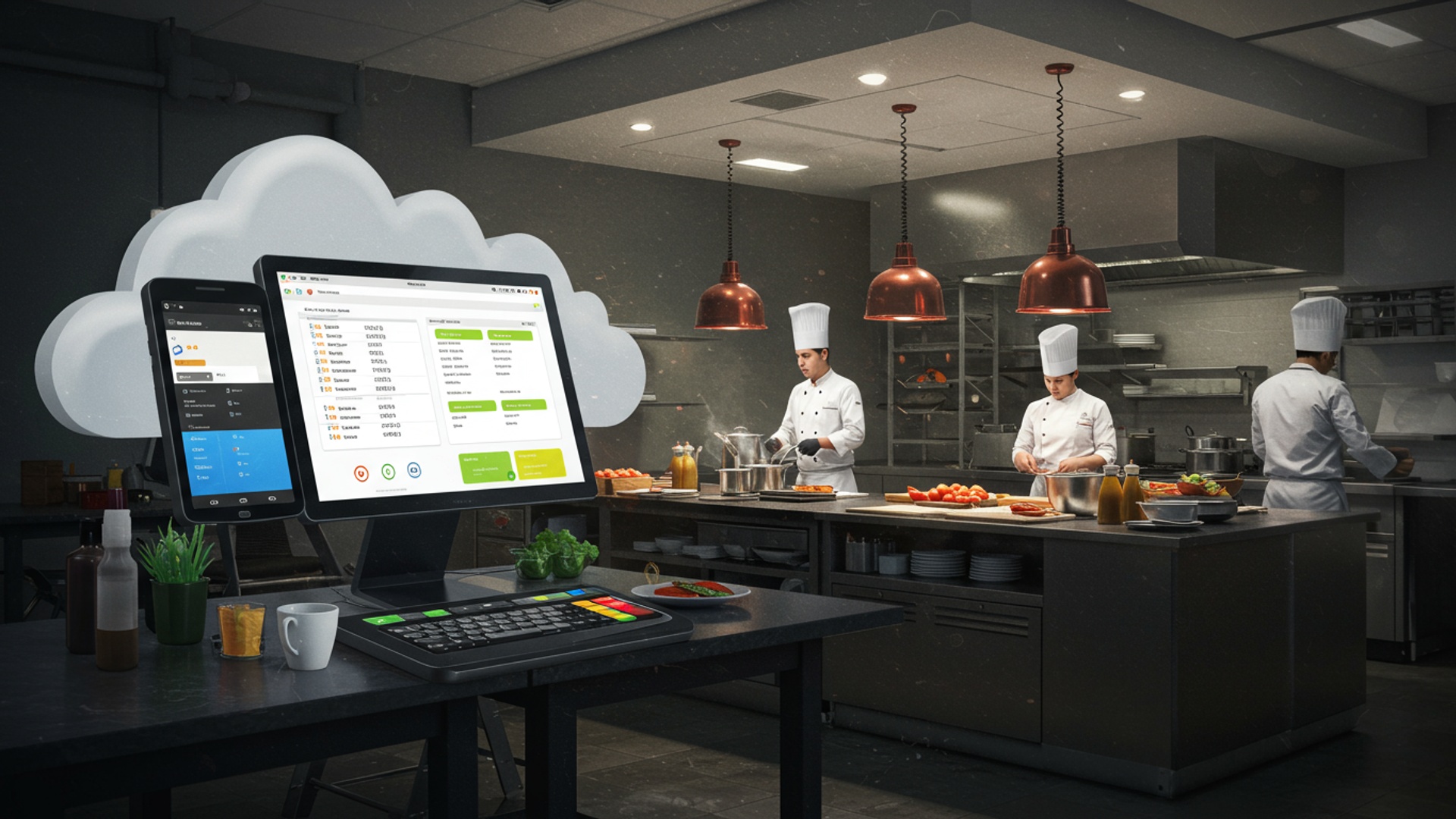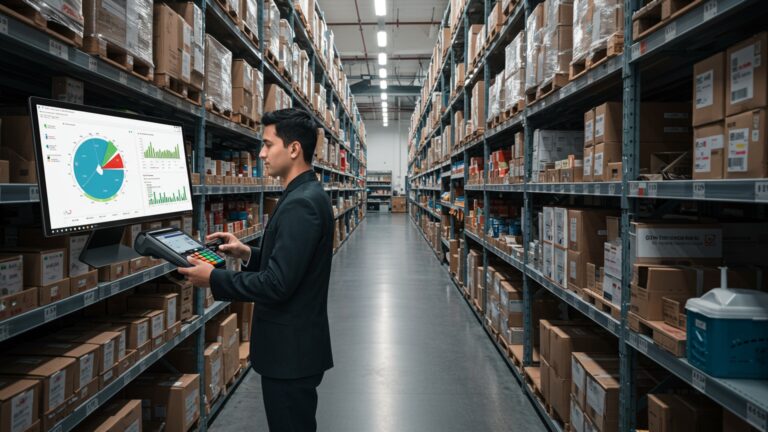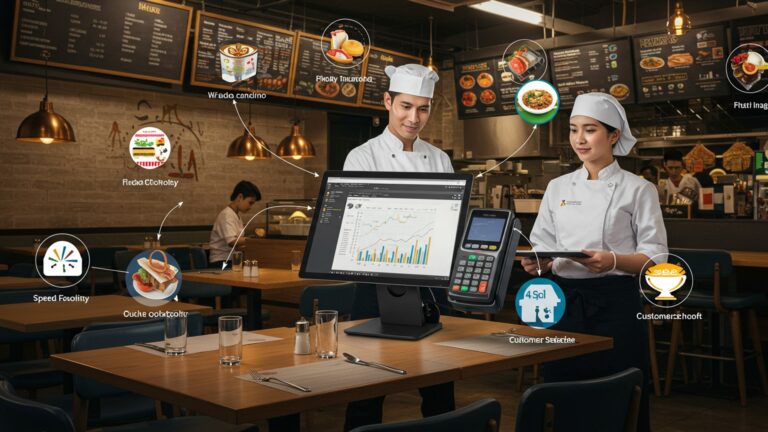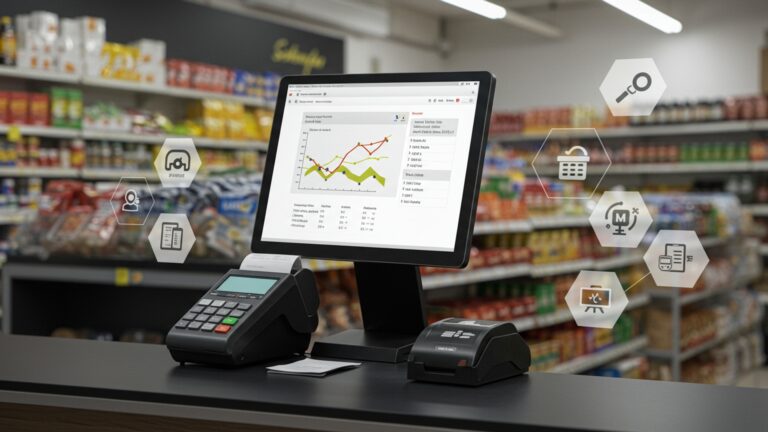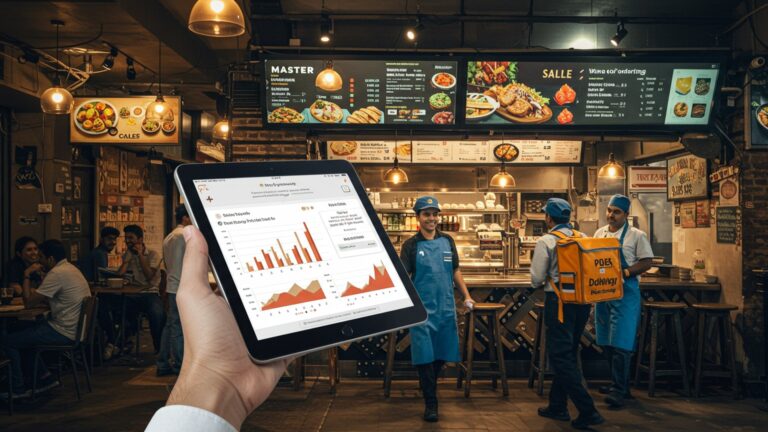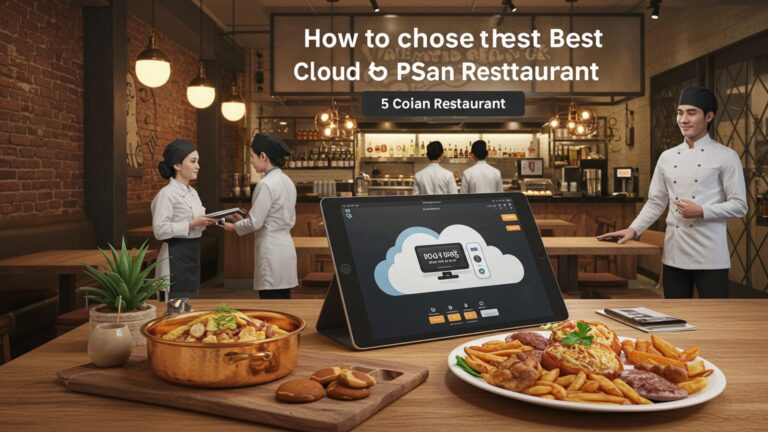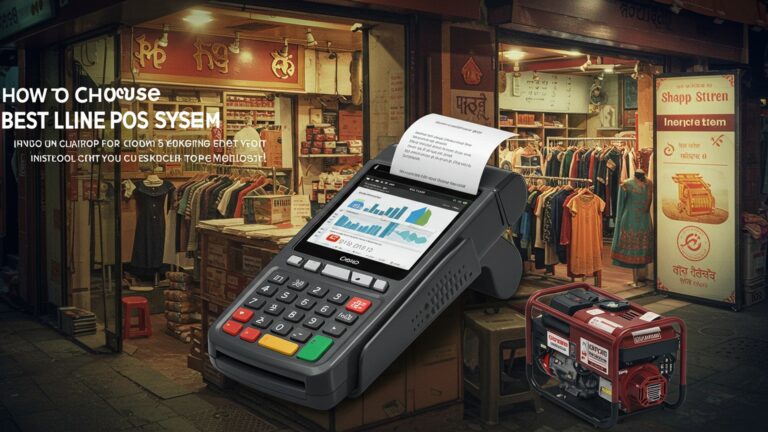Learn How to Implement POS Software for Cloud Kitchen Success in India
India’s booming cloud kitchen sector, fueled by post-pandemic digital adoption and aggregator dominance like Zomato and Swiggy, faces intense operational challenges. Effectively implementing advanced POS software for cloud kitchens India is paramount for achieving scalable success, transforming raw order data into actionable insights. This critical technology streamlines multi-brand management, automates inventory across virtual outlets. optimizes order routing, directly impacting profitability and enabling rapid market expansion by ensuring seamless, efficient service delivery from preparation to doorstep.
Understanding the Cloud Kitchen Landscape in India
India’s food service industry has undergone a significant transformation with the rise of cloud kitchens, also known as ghost kitchens or dark kitchens. These establishments operate solely for delivery, lacking a traditional dine-in area. Their popularity in India stems from several factors: lower overhead costs compared to traditional restaurants (no front-of-house staff, reduced rent), the increasing demand for convenient food delivery. the widespread adoption of online food aggregators like Zomato and Swiggy. Cloud kitchens thrive on efficiency and technology, making the right operational tools, particularly POS software for cloud kitchens India, absolutely essential for their success.
But, this model also presents unique challenges. Managing multiple brands from a single kitchen, handling orders from various aggregators, maintaining real-time inventory across a high-volume operation. ensuring seamless delivery logistics all require robust technological support. Without it, cloud kitchens risk operational bottlenecks, order errors. ultimately, customer dissatisfaction.
What is POS Software and Why Cloud-Based is Key for Cloud Kitchens?
POS stands for Point of Sale. Traditionally, a POS system was a physical terminal where transactions occurred in a retail or restaurant setting. For a cloud kitchen, the concept shifts dramatically. A POS software for cloud kitchens India is a comprehensive digital system that manages all aspects of a food business’s operations, from order taking and processing to inventory management, sales reporting. customer data. Unlike traditional, on-premise POS systems that require dedicated hardware and local servers, cloud-based POS software operates entirely on the internet. This means data is stored securely on remote servers and accessible from any internet-enabled device – a laptop, tablet, or smartphone – anywhere, anytime.
The “cloud-based” aspect is non-negotiable for cloud kitchens. It offers unparalleled flexibility, scalability. accessibility, which are crucial for a business model that relies heavily on off-site order management and remote operations. For instance, a cloud kitchen owner could monitor sales and inventory levels from home, or update menus across multiple virtual brands instantly, without needing to be physically present at the kitchen.
Key Features of POS Software for Cloud Kitchens India
To truly drive success, POS software for cloud kitchens India must offer a specific set of features tailored to their unique operational demands. Here are the critical components:
-
- Integrated Order Management
This is paramount. The software must aggregate orders from all major online food aggregators (Zomato, Swiggy, etc.) , direct website orders. even call-in orders into a single, unified interface. This eliminates the need for staff to juggle multiple tablets and reduces the risk of missed or incorrect orders.
-
- Real-time Inventory Management
Cloud kitchens deal with perishable goods and high turnover. The POS should track ingredients in real-time, alert when stock is low, manage recipes, calculate food costs. help reduce waste. This feature is crucial for profitability.
-
- Dynamic Menu Management
Easily create, update. manage menus across different virtual brands and outlets. The ability to modify prices, mark items as out of stock, or introduce new dishes instantly is vital for agility.
-
- Kitchen Display System (KDS) Integration
A digital KDS replaces paper order tickets. Orders flow directly from the POS to screens in the kitchen, categorizing them by preparation station, displaying cook times. allowing chefs to mark items as prepared. This significantly speeds up kitchen operations and improves order accuracy.
-
- Delivery Management Module
Integrates seamlessly with third-party delivery partners and can also manage an in-house delivery fleet. This includes assigning riders, tracking delivery status. optimizing routes.
-
- Robust Reporting and Analytics
Provides detailed insights into sales performance, popular dishes, peak order times, customer buying patterns. staff performance. This data is invaluable for making informed business decisions.
-
- Customer Relationship Management (CRM) Basics
While not a full-fledged CRM, the POS should capture basic customer data (order history, preferences) to enable targeted promotions and improve repeat business.
-
- Staff Management
Track staff attendance, manage shifts, define roles and permissions. monitor individual performance.
-
- Integrated Payment Processing
Support for various payment methods, including online payments, UPI, debit/credit cards. cash on delivery, with seamless reconciliation.
Benefits of Implementing POS Software for Cloud Kitchens in India
The strategic implementation of POS software for cloud kitchens India offers a multitude of benefits that directly impact efficiency, profitability. customer satisfaction:
-
- Streamlined Operations and Increased Efficiency
By automating order aggregation, kitchen display. inventory tracking, the POS reduces manual tasks, minimizes human error. speeds up the entire operational workflow.
-
- Improved Order Accuracy
A unified system for all orders means fewer mistakes in order taking and preparation, leading to higher customer satisfaction and fewer refunds.
-
- Better Inventory Control and Reduced Food Waste
Real-time tracking and intelligent forecasting help prevent over-ordering and spoilage, significantly impacting the bottom line. Consider a cloud kitchen in Bengaluru that, after implementing POS software, reduced its monthly ingredient waste by 15%, translating directly into thousands of rupees saved.
-
- Enhanced Customer Satisfaction
Faster order processing, accurate deliveries. personalized service driven by customer data contribute to a superior customer experience, encouraging repeat orders.
-
- Data-Driven Decision Making
The rich analytics provided by POS software allows owners to identify best-selling items, interpret peak hours, optimize staffing. fine-tune their marketing strategies. For example, a cloud kitchen brand noticed through POS reports that their biryani sales spiked on weekends, allowing them to pre-plan ingredient stock and staffing accordingly.
-
- Scalability for Growth
As cloud kitchens often expand to multiple virtual brands or additional locations, a cloud-based POS can easily scale with the business, managing new menus, inventory. staff without significant infrastructure changes.
-
- Cost Savings in the Long Run
While an initial investment, the long-term savings from reduced waste, optimized labor. increased efficiency far outweigh the costs.
Choosing the Right POS Software for Cloud Kitchens India
Selecting the ideal POS software for cloud kitchens India requires careful consideration. Here are key factors to evaluate:
-
- Scalability
Can the software grow with your business? Can it handle multiple brands, kitchens. increasing order volumes?
-
- Integration Capabilities
Crucially, ensure it integrates seamlessly with all major Indian food aggregators (Zomato, Swiggy, etc.) , popular payment gateways (Paytm, Razorpay, UPI). potentially even third-party accounting software.
-
- User-Friendliness
The interface should be intuitive for kitchen staff, order takers. management to minimize training time and errors.
-
- Customer Support
Localized, prompt. reliable customer support is vital. You need assistance in your time zone and language, especially during peak operational hours. Ask about their support channels (phone, chat, email) and response times.
-
- Pricing Models
interpret the subscription plans, setup fees. any hidden costs. Most cloud-based POS operate on a monthly or annual subscription.
-
- Security
Data security is paramount. Ensure the vendor offers robust data encryption, regular backups. compliance with data protection standards.
-
- Customization Options
Can the software be tailored to your specific menu items, kitchen workflows. reporting needs?
Here’s a comparison of common features you might find in different POS solutions:
| Feature Category | Basic POS Solution | Advanced POS for Cloud Kitchens |
|---|---|---|
| Order Aggregation | Manual entry from multiple tablets | Automated, unified dashboard from Zomato, Swiggy, website, etc. |
| Inventory Management | Basic stock tracking | Real-time tracking, recipe costing, low stock alerts, vendor management |
| Kitchen Display System (KDS) | Often not included or basic | Integrated, customizable display, preparation timers, order routing |
| Delivery Management | No direct integration | Integration with aggregators, in-house fleet management, route optimization |
| Reporting & Analytics | Basic sales reports | Detailed sales, item, staff. customer analytics; customizable reports |
| Multi-Outlet/Brand Support | Limited or separate licenses | Centralized management for multiple brands and kitchens |
| Customer Support | Email/basic support | 24/7 phone, chat, dedicated account manager (often for premium plans) |
Implementation Guide: Step-by-Step Process
Implementing POS software for cloud kitchens India successfully requires a structured approach:
-
- Assess Your Needs
Before looking at vendors, clearly define your operational challenges and what you expect the POS to achieve. How many brands do you operate? What are your peak hours? What integrations are non-negotiable?
-
- Vendor Selection and Demo
Research potential vendors specializing in cloud kitchen POS solutions. Schedule demos to see the software in action and ask specific questions related to your needs. Don’t hesitate to ask for references from other cloud kitchens.
-
- System Setup and Configuration
- Menu Upload
- System Setup and Configuration
Input all your menu items, prices, modifiers. descriptions for each brand.
-
-
- Inventory Setup
-
Define all your ingredients, their units of measurement, current stock levels. set up recipes.
-
-
- Staff Accounts
-
Create user accounts for all staff members with appropriate roles and permissions (e. g. , kitchen staff, order manager, owner).
// Example of a simplified JSON structure for menu item upload { "menu_items": [ { "item_id": "CKI001", "item_name": "Chicken Biryani (Half)", "brand": "Biryani Express", "price": 250. 00, "category": "Main Course", "available": true, "modifiers": ["Extra Raita", "No Spice"] }, { "item_id": "CKI002", "item_name": "Paneer Tikka Masala", "brand": "Curry Delights", "price": 320. 00, "category": "Main Course", "available": true, "modifiers": ["Naan", "Rice"] } ] } -
- Integrations
Work with the vendor to connect your POS with all necessary third-party platforms – food aggregators, payment gateways. any other essential tools. This often involves API keys and authorization.
-
- Staff Training
This is critical. Conduct thorough training sessions for all staff members on how to use the new system for order taking, kitchen operations, inventory updates. reporting. Hands-on practice is essential.
-
- Go-Live and Monitoring
Start using the POS system. Closely monitor operations for the first few days/weeks. Be prepared to troubleshoot and make minor adjustments. Keep the vendor’s support team on standby.
-
- Ongoing Support and Optimization
Regularly review performance reports, identify areas for improvement. utilize the vendor’s support for any issues or to explore advanced features.
Real-World Application: “Flavor Fusion” Cloud Kitchen Success Story
Consider “Flavor Fusion,” a hypothetical but realistic cloud kitchen chain operating in Mumbai. They started with two virtual brands – ‘Mumbai Munchies’ (local street food) and ‘The Keto Kitchen’ (health-focused meals) – from a single central kitchen. Initially, they struggled with managing orders from Zomato, Swiggy. their own website, using multiple tablets and manual entry. This led to frequent order errors, delays. significant food waste due to inaccurate inventory tracking.
Upon implementing a comprehensive POS software for cloud kitchens India, Flavor Fusion experienced a dramatic turnaround. The POS aggregated all orders into a single dashboard, which then fed directly into an integrated KDS. Chefs could see orders for both brands on one screen, color-coded for priority, significantly reducing preparation times and errors. Real-time inventory tracking, linked to their recipes, allowed them to accurately forecast ingredient needs, cutting food waste by 20% in the first three months. The analytics module revealed that ‘Mumbai Munchies’ had a peak demand for Vada Pav during evening rush hours, prompting them to pre-prepare ingredients and allocate dedicated staff during those times. The delivery management feature streamlined their in-house riders, leading to faster delivery times and improved customer satisfaction. This holistic approach, powered by their POS software, allowed Flavor Fusion to successfully launch a third brand, ‘Dessert Dreams,’ without any operational hiccups, demonstrating the scalability and efficiency benefits.
Challenges and Considerations
While the benefits are substantial, implementing POS software for cloud kitchens India is not without its challenges:
-
- Internet Connectivity
Reliable, high-speed internet is fundamental for cloud-based POS. In areas with inconsistent connectivity, this can be a major hurdle. Always have a backup internet solution.
-
- Data Security and Privacy
Entrusting your business data to a third-party vendor requires due diligence. Ensure the vendor has robust security protocols and is compliant with relevant data protection regulations.
-
- Staff Resistance to Change
Introducing new technology can be met with resistance from staff accustomed to older methods. Proper training, clear communication of benefits. ongoing support are crucial to successful adoption.
-
- Vendor Lock-in
Ensure the chosen POS software allows for easy data export if you ever decide to switch vendors. comprehend the terms and conditions regarding data ownership and transfer.
-
- Cost
While beneficial in the long run, the initial investment and ongoing subscription fees need to be factored into the budget.
Conclusion
Implementing cloud kitchen POS software in India is a transformative step, not merely a tech upgrade. It’s about orchestrating seamless operations, from precise order management and real-time inventory tracking to insightful sales analytics that illuminate your path to profitability. My personal tip, honed from observing numerous high-growth cloud kitchens across bustling Indian cities like Mumbai and Delhi, is to prioritize a system offering robust integration with popular food delivery aggregators and payment gateways; this synergy is non-negotiable for streamlining the modern Indian food ecosystem. Ultimately, your chosen POS system should empower you to adapt swiftly to market shifts, like the recent surge in hyperlocal delivery demands, ensuring your kitchen remains agile and competitive. Embrace this technology as your strategic partner, transforming operational challenges into opportunities for growth. The future of your cloud kitchen’s success is intrinsically linked to the intelligent tools you adopt today, propelling you towards culinary excellence and sustained business expansion.
More Articles
Discover the 7 Best POS Software Solutions in India for Your Business
How to Get the Most Affordable POS for Your Indian Restaurant Business
How to Choose the Best POS System for Your Small Indian Restaurant
How to Choose and Use a POS System for Inventory Management in India
Compare POS Software Price in India 5 Essential Factors to Know
FAQs
What exactly is a POS system for a cloud kitchen. why is it a big deal for businesses in India?
A POS (Point of Sale) system for a cloud kitchen is specialized software that helps manage orders, inventory, billing. delivery integrations, all from a central platform. For Indian cloud kitchens, it’s crucial because it streamlines operations, handles diverse payment methods, integrates with local delivery partners. helps manage the high volume of online orders efficiently, leading to better customer satisfaction and growth.
How does implementing POS software actually contribute to a cloud kitchen’s success here in India?
It boosts success by automating order processing from various platforms, optimizing kitchen workflows, reducing manual errors, providing real-time sales data. helping manage inventory to prevent stockouts or wastage. This leads to faster order fulfillment, improved customer experience, better cost control. informed business decisions, all vital for the competitive Indian market.
What essential features should I look for when choosing POS software for my cloud kitchen in India?
Look for features like multi-platform order aggregation (Swiggy, Zomato, etc.) , robust inventory management, kitchen display system (KDS), integrated payment gateways, customer relationship management (CRM), detailed reporting and analytics. scalability to handle future growth. Localized support and integration with common Indian accounting practices are also a big plus.
Is it difficult or time-consuming to set up POS software for a cloud kitchen, especially if I’m new to it?
Not necessarily. Many modern cloud kitchen POS systems are designed for ease of use. While there’s an initial setup phase to configure menus, inventory. integrations, most providers offer guided onboarding and support. With proper planning and vendor assistance, you can get your system up and running smoothly without extensive technical expertise.
My cloud kitchen deals with so many delivery apps. Can a POS system really help manage all those orders in one place?
Absolutely! One of the primary benefits of a cloud kitchen POS is its ability to integrate with multiple online food aggregators like Swiggy, Zomato. others. It pulls all orders into a single interface, eliminating the need to juggle multiple tablets, reducing errors. streamlining order processing directly to your kitchen.
Can a POS system actually help me keep track of ingredients and reduce food waste in my Indian cloud kitchen?
Yes, definitively. A good POS system includes powerful inventory management tools. It tracks ingredient usage based on orders, alerts you when stock is low, helps forecast demand. identifies slow-moving items. This data allows you to optimize purchasing, minimize spoilage. significantly reduce food waste, directly impacting your bottom line.
What’s the typical cost involved in getting and implementing POS software for a cloud kitchen in India?
The cost can vary widely depending on the features, vendor. scale of your operations. It usually involves a subscription fee (monthly or annually) and sometimes a one-time setup fee. Some providers offer different tiers, so you can choose a plan that fits your budget and specific needs. It’s an investment that typically pays for itself through increased efficiency and reduced costs over time.

